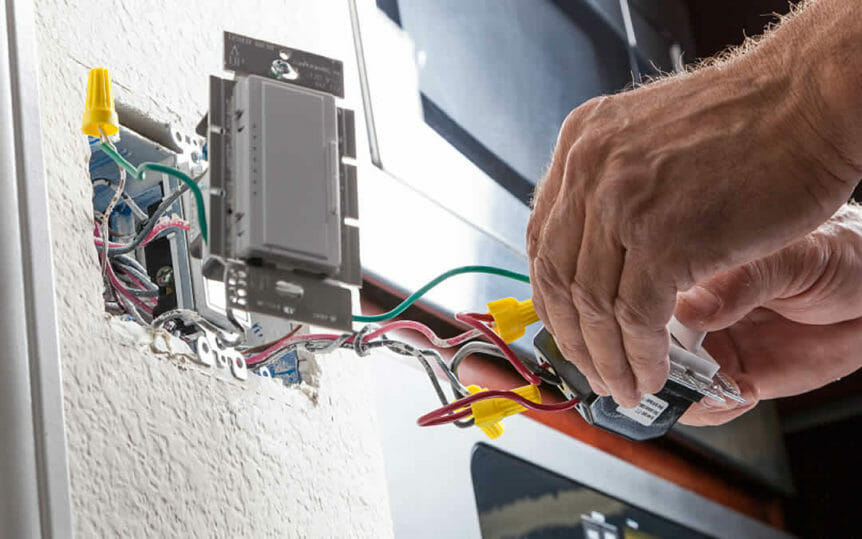
Live In An Older Home? Expect Electrical Problems!
Moving into an older home in order to “fix it up” is a dream for a lot of people. With an older home, you are getting the benefit of old world construction. Some houses in Houston have stood for decades and were even built by hand, and that’s something you can’t put a price on. But no matter how beautiful the house looks on the outside, it is going to need a complete makeover on the inside.
Electrical work is very complex. Did you know that the code for electrical work is updated every three years? Every time the code is updated, something in your electrical system no longer meets the latest standard. And, if your house was built in the 1980’s or before and it’s electrical system has not been upgraded, you are probably experiencing your fair share of problems. Read on to learn about common electrical problems that older houses face so you will know what to do if they happen to you.
Backstabbed Wiring
Every electrical outlet and switch in a home has terminals on the backside that are used for securing the different wires to the outlet. In a lot of older houses, it is common for the wires to be “stabbed” to the outlet instead of properly wrapped around each terminal.
“If you look at a switch and you turn the switch around you will see holes there that you can stab the wires through so they will make contact and hold,” said John Moore Services Electrical Manager David Floyd. “There are also two terminals so the wires can be wrapped around them and be secured in place. A lot of times in older houses the wires are only stabbed through and not wrapped around the terminals. It is a quicker way to do electrical work, but it should not be done because the wires can easily come undone and become a fire hazard.”
Knob & Tube Wiring
If your home was built in the 30’s, 40’s, 50’s or earlier and has not been updated, chances are it has a knob and tube wiring system. The main objective for this system is to keep hot wires from starting a fire. To prevent wires from heating up and getting too close to the wood rafters, electricians would drill a hole through the rafters, install a porcelain casing through the wood, and place the wires inside the casing. As the wires heat up the porcelain heats up also, but not enough to heat the rafters and start a fire.
“If your house has knob and tube wiring, the whole electrical wiring system needs to be replaced. Most electricians don’t attach new wiring to knob and tube because by doing so they are creating a liability,” said Floyd. “The wiring systems are not the same and it shouldn’t be done. It’s like trying to make an omelet with 3 good eggs and 2 bad ones, it’s not going to be good.”
According to Floyd, the re-wiring process in older homes is going to be costly. New homes have walls made from sheetrock whereas older ones use plaster and have large wooden slats which make it difficult to get behind and start the re-wiring process. Because of the cost, it is important that you hire a reputable, licensed and experienced electrician who can do the job correctly.
Improper Grounding
Many older homes are built using a two-wire system instead of three. This means that instead of their outlets having three-prong holes, they only have two. Years ago this was very common, but today, most all items that require an electrical outlet for use are made with a three-prong cord and will not work with the old system.
“We see a lot in older houses that people try and correct their two-wire system themselves,” said Floyd. “Each device should have its own ground and if people try to add their own ground to their two-wire system they are causing more problems by making alternate paths to ground.”
Every house should have only one path to ground, that way everything is connected to the same service and then together connected to the grounding rod that is buried 8 feet under the yard. If there is another wire that is tied to a pipe that makes is own path to the grounding rod, then two paths have been created which is very dangerous. Having two or more paths to ground creates shorts and electrical shocks.
“With older homes, we usually run into layers of issues,” said Floyd. “The house probably goes through 2 or 3 people who all did different things to it. Just because you didn’t re-wire your house to have two alternate paths to ground does not mean someone else didn’t. That’s why it’s important to have your electrical system inspected by a professional who knows what he is doing.”
Electrical work is complicated, and if you live in an older home and make repairs yourself you can easily get hurt. It’s important to hire a trusted and certified company to help you with your electrical problems so you don’t have to worry about the job being done improperly. If your house is older or you are experiencing electrical problems, call the experts at John Moore Services and get it done right.
